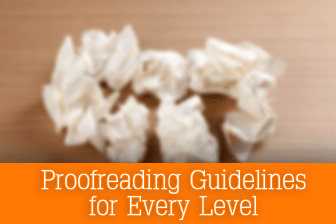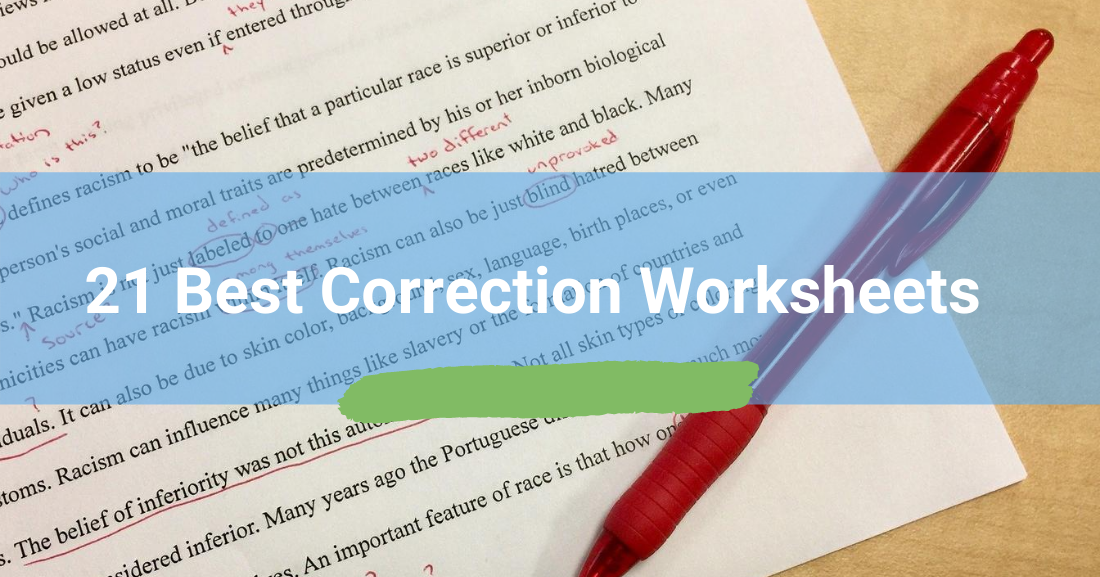Get Out Your Red Pens! Proofreading Guidelines for Every Level


Nobody likes making mistakes, especially when you're trying to master something. However, in school, making mistakes is a big part of the learning process. It's up to us as teachers to provide students with the knowledge they need to make mistakes, learn from them, and automatically self-correct so they don't make those mistakes repeatedly. As students are learning new subjects, they are bound to be imperfect along the way before they master the new topic.

It's important not to dwell on a student's shortcomings, but instead to use mistakes as learning opportunities to help them identify common errors in grammar spelling and punctuation. Not only does self correction help students with their future assignments, but it helps build their writing spelling and grammar skills faster than anything else could.
From working on editing and proofreading to sentence correction to commonly confused words, there are several ways to practice the art of correction with students. To get started, we've rounded up the best correction worksheets and activities to help you navigate these tricky waters.
If you're a teacher to beginner students, mistakes are the name of the game. As young learners Practice sentence structure, punctuation, grammar, and spelling, they have to stumble through before they are experts—that's no surprise. However, there's a way to take advantage of common mistakes and use them to benefit students early on in their education. With sentence correction worksheets, students are given worksheets with sentences that contain common mistakes And they are asked to correct those mistakes, usually by rewriting the sentence. Identifying common mistakes is an excellent way to hone in on new skills and practice basic sentence structure. Then, when students adapt to recognizing mistakes they will be more likely to self-correct while working on future assignments. Sounds like a win-win, huh?
Check out some of our favorite sentence correction worksheets for beginners:
 Editing and Proofreading
Editing and ProofreadingAnytime the red pen comes out in the classroom, students are often intimidated. The bold-colored X’s and scribbles are often a symbol of failure, lack of knowledge, and getting something wrong. By introducing editing and proofreading to your students, you have the chance to repaint the red pen in a different light. With editing and proofreading exercises, students will be in control of making Corrections, rather than being on the receiving end of them. If your students have never worked on editing and proofreading, it's a good idea to start with exercises that ask them to fix up a sample of work, rather than their own. This allows students to stay objective and make necessary corrections to spelling, grammar, and punctuation errors without the urge to “go easy” because it’s their own work.
Here’s a few of our favorite editing and proofreading exercises to start with:
Once students have gone through editing samples of work, it's an appropriate time to use the correction skills they've learned on their own writing. By now, they've learned about common mistakes that are made in writing, which will make it much easier to self-edit as they are writing their own materials. Typically, this happens with more advanced students who are writing papers and essays. With the knowledge they’ve learned in previous classes, they can go on to edit and proofread their writing drafts, and there will be less mistakes to correct (in theory). In the end students writing skills are sharpened and their confidence levels are boosted because they are mastering skills they once struggled with.
Check out these self-correction editing and proofreading resources and activities :
Upon learning a new language, there will inevitably be confusing words. Heck, even if you speak English as your first language, there are plenty of terms and phrases that make you tilt your head and say “huh?!” Addressing commonly confused words and phrases head on will not only help your students less likely to make mistakes in the future, but these tips and tricks will stick with them throughout their education so they are able to master the usage of tricksters like among/between, as/like, and affect/effect.
Feel free to download these worksheets to give your students practice with identifying commonly confused terms:
Remember, Exposing students to correction activities is not about highlighting their mistakes, it's about empowering them to learn, self-correct, and be more confident in their skills. For more on this subject, check out 6 Great Ways to Help ESL Students Achieve Self-Correction.